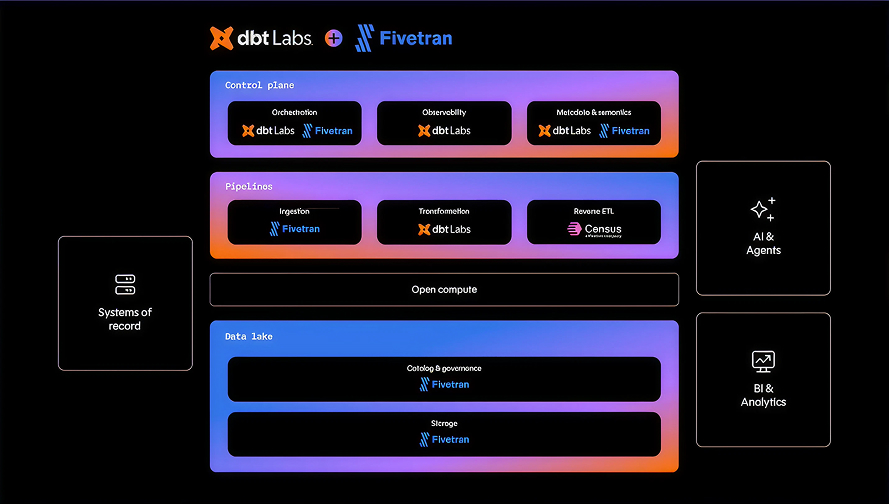Data accessibility and utilization within organizations have become critical challenges as businesses amass vast amounts of information. Internal data marketplaces emerge as a solution, offering a centralized platform for data discovery, sharing, and access within an organization. At Select Star, we are seeing more and more asks by our users to make data assets easier to discover within their organization. This article explores the concept of internal data marketplaces, their importance, key components, implementation best practices, and future trends.
Table of Contents
- What is an Internal Data Marketplace?
- Why are Internal Data Marketplaces important?
- Key Components of a Successful Internal Data Marketplace
- Challenges and Considerations in Building an Internal Data Marketplace
- Leveraging Select Star to Kickstart Your Internal Data Marketplace
- Best Practices for Implementing an Internal Data Marketplace
- Future Trends in Internal Data Marketplaces
What is an Internal Data Marketplace?

An internal data marketplace functions as a centralized platform within your organization, facilitating the discovery, sharing, and access of data assets for analysts, data scientists, and business users. Unlike public data marketplaces that focus on external datasets, internal marketplaces concentrate on an organization's proprietary data resources. These platforms enable a self-service model, allowing data consumers to easily find and utilize relevant information without the need for extensive technical knowledge or assistance from IT departments.
The core purpose of an internal data marketplace is to break down data silos, promote data democratization, and streamline the process of data-driven decision-making across various departments. By providing a unified interface for data discovery and access, these marketplaces empower your teams to leverage the full potential of your organization's data assets.
Why are Internal Data Marketplaces important?
Implementing an internal data marketplace offers several significant benefits that can transform how your organization operates and makes decisions, including data accessibility, data-driven decision making, data democratization, data governance, and operational efficiency.
- Improved Data Accessibility: Internal data marketplaces break down silos, making valuable insights available across departments
- Enhanced Data-Driven Decision-Making: Quick access to relevant data empowers teams to make informed decisions faster, improving operational efficiency
- Promotion of Data Democratization: These platforms foster a data-driven culture by making data more accessible and understandable to a wider range of users
- Streamlined Data Governance: Centralized management of data access, quality, and compliance helps maintain data integrity and regulatory adherence
- Increased Operational Efficiency: By reducing time spent on data requests and manual preparation, data teams can focus on more value-adding activities
Key Components of a Successful Internal Data Marketplace
To create an effective internal data marketplace, organizations should focus on implementing several critical components. The marketplace should offer intuitive search functions with advanced filtering and categorization capabilities, along with rich metadata and documentation to guide users in finding the right data assets efficiently. Built-in data quality checks and alerts for outdated or inconsistent data are essential, as are clear governance policies, including data stewardship and access protocols. End-to-end visibility of data flows from source to consumption is critical, with detailed documentation on data transformations, definitions, and usage guidelines helping users understand and trust the data they access. Role-based access control ensures users only access relevant and authorized data, while compliance features must be in place to meet internal policies and external regulations. Seamless integration with existing data warehouses, BI tools, and ETL pipelines is crucial, and API access for custom integrations and automated data workflows enhances the marketplace's utility. Finally, an easy-to-use interface catering to both technical and non-technical users is essential, with collaboration tools like data annotations, sharing options, and discussion threads promoting knowledge sharing and data utilization.
Challenges and Considerations in Building an Internal Data Marketplace
Implementing internal data marketplaces comes with several challenges despite their benefits. Balancing data access with privacy compliance (GDPR, CCPA) requires protecting sensitive information while enabling effective use. Maintaining data quality across diverse sources demands robust cleansing and validation strategies. Overcoming resistance to new data practices necessitates investment in training and communication to demonstrate the marketplace's value. Scalability is crucial, as the platform must accommodate growing data volumes, users, and use cases. However, the potential to maximize data asset value makes addressing these challenges worthwhile for organizations committed to data-driven decision-making.
Leveraging Select Star to Kickstart Your Internal Data Marketplace
Before diving into best practices, it's worth noting how Select Star can help organizations get their internal data marketplace initiatives off the ground. Select Star's intelligent metadata platform provides a solid foundation for building an effective internal data marketplace. By automating data analysis and documentation, Select Star enables you to quickly catalog and organize your data assets, making them easily discoverable and understandable. The platform's features, such as automated lineage tracking and usage analysis, provide crucial context that enhances the value of shared data within the marketplace. Additionally, Select Star's AI assistant can help users navigate complex data landscapes, further democratizing access to valuable insights across the organization.
Best Practices for Implementing an Internal Data Marketplace
To maximize the benefits and overcome challenges, you should follow these best practices: starting small, engaging stakeholders, prioritizing data quality, and implementing continuous improvement.
- Start Small and Scale: Initiate a pilot project with key datasets, expanding gradually based on feedback and success metrics
- Engage Stakeholders Early: Involve data consumers, IT teams, and governance stakeholders from the beginning to ensure the marketplace aligns with diverse needs and organizational goals
- Prioritize Data Quality and Governance: Establish trust through consistent data quality and transparent governance by implementing automated checks and clear ownership processes
- Continuous Improvement: Regularly enhance the marketplace based on user feedback and evolving data needs, focusing on features, interface refinement, and dataset expansion
Future Trends in Internal Data Marketplaces
The future of internal data marketplaces is being shaped by emerging trends in data management. AI-driven personalized recommendations are set to enhance data discovery efficiency. The focus is shifting towards advanced analytics and enriched data products, increasing marketplace value. Data mesh concepts are gaining popularity, supporting decentralized architectures with domain-oriented data products. These trends align with modern data management approaches, enabling more flexible and scalable ecosystems.
Internal data marketplaces are powerful tools for unlocking an organization's data potential. By offering centralized, user-friendly platforms for data discovery and access, they drive innovation, improve decision-making, and foster data-driven cultures. As data volumes and complexity grow, these marketplaces will play a crucial role in transforming data into strategic assets for enterprises.









